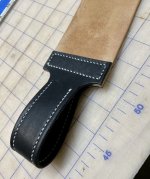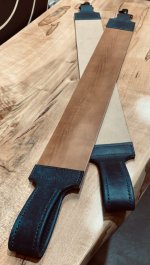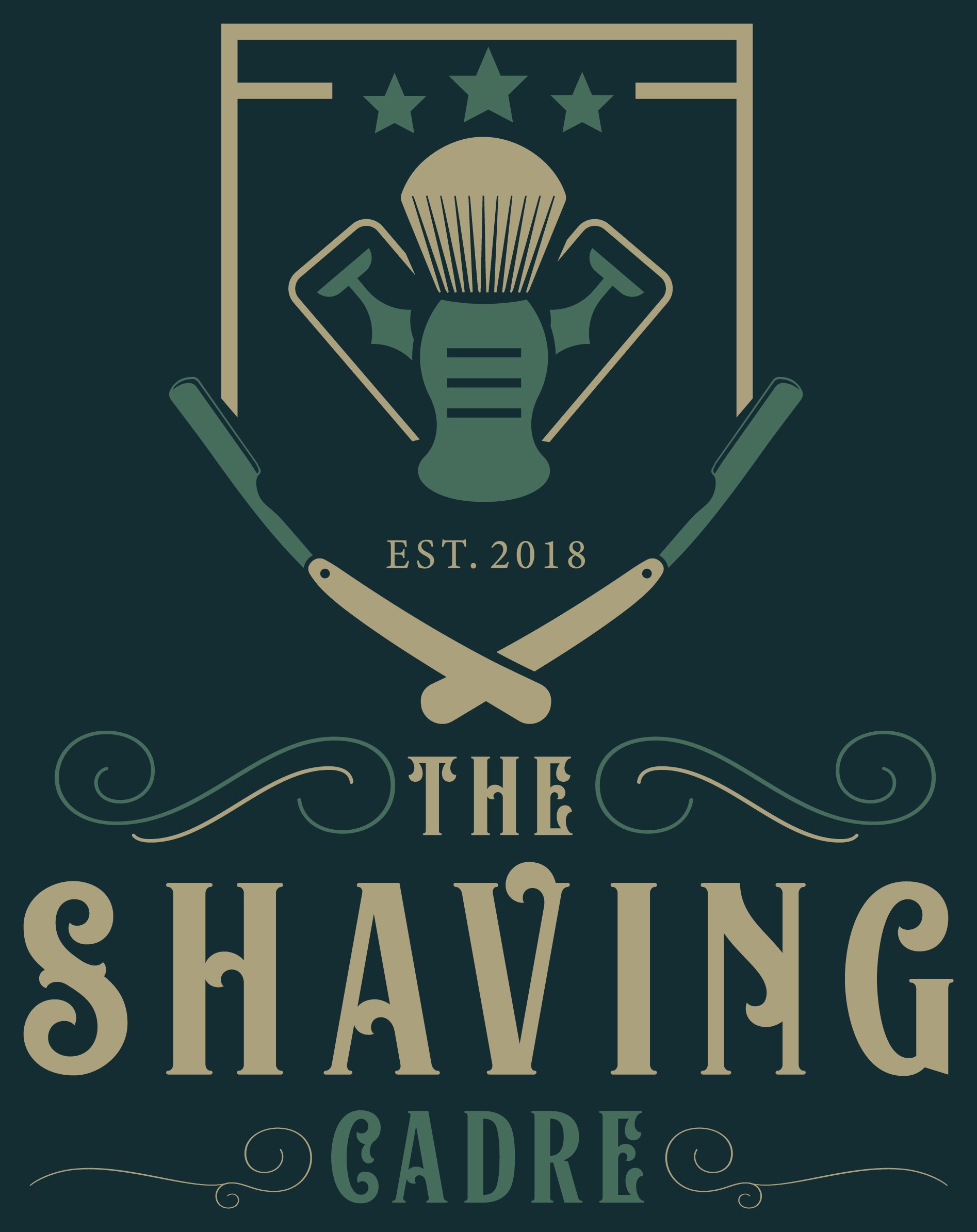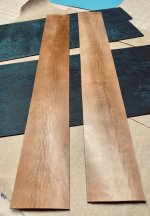Awesome
The Shaving Cadre
You are using an out of date browser. It may not display this or other websites correctly.
You should upgrade or use an alternative browser.
You should upgrade or use an alternative browser.
Michael Phillip’s Wet Shaving Journey
- Thread starter Michael Phillip
- Start date
I enjoyed reading your post, Michael. I'm not a SR guy, but it was interesting nonetheless. Enjoy your shaves!
Michael Phillip
Shave Member
Thanks Bruce, one of the coolest things about wet shaving I how each of us finds different ways of enjoying it.I enjoyed reading your post, Michael. I'm not a SR guy, but it was interesting nonetheless. Enjoy your shaves!
Wow, what an insightful post on your honing progress and how you got to where you are! I love the idea of the 1K challenge! I’ve never thought to try this, maybe you could start a thread on TSC with the basic idea and we can join in?Hello Cadre:
As 2021 started I was alternating between my straight and DE razors while trying to figure out how to hone a straight razor. There are an overwhelming number of options for honing a straight razors, synthetics, Arkansas stones, Coticules, Jnats and many more that I had never heard of before. I decided to pick one method and stick with until I figured it out, I went with Japanese naturals. I looked around and found a reasonably priced koppa. It was not long before I was getting edges sharp enough to shave with, but nothing very impressive. I had heard many wet shavers claim that a straight razor shave was superior to a DE, clearly they were not using any of my edges.
There were 2 major milestones for me in learning how to hone. The first was something called the “1K Challenge”, and the second was the Hanging Hair Test.
Somewhere I read about the 1K Challenge, basically the challenge is to set the bevel well enough to be able to shave with a 1K edge. It took me several attempts, but I finally was able to shave (1 full pass) with a 1K edge. It was not a comfortable shave by any stretch of the imagination, but I was cutting whiskers. After completing the 1K edge shave, I proceeded to shave after each step in my progression (1k, 3k, 6k, 8k, and jnat). This showed me firsthand that most (if not all) of the sharpness comes from the proper setting of the bevel and also what each step in the progression is adding to the refinement of the edge.
There are many different opinions about the hanging hair test, some swear by it, some sweat at it, and some call it a parlor trick. I was never able to get an edge that passed the HHT. I had been using various tests like grapes, tomatoes, and the old thumb nail test to check my edges. Then I saw Bill M’s video about using a packing peanut. I now keep a small box of packing peanuts with my honing gear, I use these when setting the bevel. Thanks again Bill, using these to check the edge is genius. I picked up a few naguras from “Johns Shave Shop” on Etsy and I started talking with John about honing. John was very generous with his time and knowledge. I had talked to several people about honing and John was the first one that did not give me “wishy washy”, ymmv, ambiguous information.
He listened patiently when I told him how I was honing and when I was done he simply said this: He said “Mike, if your edges are not passing the HHT, then you need to go back to your stones until they are passing the HHT”
I started to ask about different hair, and he told me that the hair does not matter as long as it is consistent. He recommended using hair from my wife’s hair brush as a consistent and plentiful source.
By using a consistent source of hair, the HHT is consistent for me. I can easily tell from the HHT how the edge is going to shave. The coticule.be web site defines six different levels of results from the HHT from HHT-0 to HHT-5. For me the actual level is not important, what is important is that I can tell the difference between the levels. Based on my experience I can tell by the HHT (using my wife’s hair) how that edge is going to shave my beard.
It has been about a year since John gave me this advice, and I have honed a limited number of razors of different grinds and steels types, but I find the HHT an invaluable tool for evaluating the edge and honing it to my preferences. This was a game changer for me and I will be forever grateful to John.
Here are the different HHT result level as defined on the Coitule.be web site for reference.
HHT-0 : Shave: The Hair can be shaved immediately at the holding point.
HHT-1: Violin: The hair doesn't cut, but it "plays violin" with the edge. This is due to the shingles catching the edge, but it's not sharp enough to penetrate. On a full hollow razor, a faint ringing sound can be heard.
HHT-2: Split: When the hair is dragged across the edge, the edge catches the hair and splits it lengthwise
HHT-3: Catch & Pop: When it is dragged across the edge a bit, the edge catches the hair and pops it, the severed part will jump away
HHT-4: Pop: The hair is popped immediately when it touches the edge. It still jumps away
HHT-5: Silent Slicer: The hair falls silently as soon as it touches the edge
This brings me up to date in my short wet shaving journey. I have learned just enough to know that there is a huge world of traditional shaving to explore and learn about. Thanks to all of you that have taken the time to read and comment on my posts. I am looking forward to learning and sharing with all of you.
Thanks again for the warm welcome to the Cadre.
View attachment 88825
Fantastic post brother! I’d better really bring my honing game when we exchange edges! I’m up against a Jnat PRO!
Michael Phillip
Shave Member
Thanks Matt, you are too kind, I am sure your edges will blow mine out of the water. I have only been honing for a short time, so I am at best an enthusiast. I am looking forward to trying one of your edges and getting your opinion and some pointers on mine.Wow, what an insightful post on your honing progress and how you got to where you are! I love the idea of the 1K challenge! I’ve never thought to try this, maybe you could start a thread on TSC with the basic idea and we can join in?
Fantastic post brother! I’d better really bring my honing game when we exchange edges! I’m up against a Jnat PRO!
Michael Phillip
Shave Member
Okay that is gonna be cool as a 1990's surfer dude! Are you making handles or doing D-Rings?? Horse is the way to go in both thickness and usually has a fast draw, I'm excited to see where you go with these!
Michael Phillip
Shave Member
I am flattered, thank you. l enjoyed watching Matt shave with your jnat edge, it was obvious the it was an excellent edge.WOW! just read through your journal, great stuff. Your leather work looks very nicely done, I would love to see more of your projects (shaving related or not).
Michael Phillip
Shave Member
Thanks Matt.Okay that is gonna be cool as a 1990's surfer dude! Are you making handles or doing D-Rings?? Horse is the way to go in both thickness and usually has a fast draw, I'm excited to see where you go with these!
I agree about the horse hide, it has a fast draw and more importantly it really does a great job bringing the edge up to it’s full potential. I like it better than anything else I have tried, including my expensive Kanayama strop. The Horween Russet leather is available in several different weights. I am using the 9-10 ounce, which is the heaviest. I also attached nubuck (suede) to the back for extra stiffness. For the end I am hand stitching a loop. Here is a picture of my prototype.

Michael Phillip
Shave Member
I finished up the strops

Material:
Construction:

Material:
- Strop: Russet Horsehide for Horween Leather Tannery in Chicago.
- Strop Backing: Nubuck, a type of suede
- Ends: Italian leather for MPG Tannery in Tuscany, Italy
- Hand Stitching with matching Tiger Thread
- Hardware: Solid heavy duty Swivel Trigger Snap – PVD Black
Construction:
- Hand made
- Hand Stitching
- Beveled and burnished edges
Wow, Michael. I bet you could sell these for a pretty penny. They are stunning!I finished up the strops
Very beautiful work! I’m envious of your skill and tenacity with leather! Now you’ll be oft engaged in laborious questionings about where you learned it all. Just like with JnatsI finished up the strops
View attachment 89855
Material:
- Strop: Russet Horsehide for Horween Leather Tannery in Chicago.
- Strop Backing: Nubuck, a type of suede
- Ends: Italian leather for MPG Tannery in Tuscany, Italy
- Hand Stitching with matching Tiger Thread
- Hardware: Solid heavy duty Swivel Trigger Snap – PVD Black
Construction:
- Hand made
- Hand Stitching
- Beveled and burnished edges
I love the grain pattern of this leather!
Michael Phillip
Shave Member
The grain pattern on that that piece of leather was really cool, and a bit unusual. I am thinking of them as a matching pair, of which one will stay in my shave den.Very beautiful work! I’m envious of your skill and tenacity with leather! Now you’ll be oft engaged in laborious questionings about where you learned it all. Just like with Jnats
I love the grain pattern of this leather!
I agree. Very handsome.The grain pattern on that that piece of leather was really cool
Michael Phillip
Shave Member
A special thanks to @Luecke3262 for taking the time to try several of my razors. I was very nervous because I am relatively new to honing, especially compared to many of you here. Matt is the only one that has used a razor that I honed (besides me of course). I can’t thank you enough for your feedback both in your videos and privately. I am looking forward to many more conversations about straight razors, honing and other fun things.
Michael Phillip
Shave Member
Back in post #38 I mentioned something called the 1K Challenge. For those unfamiliar with it, the idea is that most of the sharpness of a straight razor is achieved by setting the bevel. If the bevel is set well, you should be able to shave with the razor. This is something often overlooked by new honers like myself. I have been encouraged to start a thread about the 1K Challenge, please let me know if there’s any interest.
Today’s shave was two passes with a 1K edge. The razor arrived last week from eBay for under thirty dollars including shipping, the needed some work.
Razor: Thistle Cutlery 5/8 honed on my 1K (yes, 1K, that’s not a typo)
Soap: Calante for Crowne and Crane, a new scent
Brush: Maggards SHD Badger.
Bowl: Captain’s Choice

Today’s shave was two passes with a 1K edge. The razor arrived last week from eBay for under thirty dollars including shipping, the needed some work.
Razor: Thistle Cutlery 5/8 honed on my 1K (yes, 1K, that’s not a typo)
Soap: Calante for Crowne and Crane, a new scent
Brush: Maggards SHD Badger.
Bowl: Captain’s Choice

I've watched a couple of Matt's videos with your razors' comparisons, and he has been impressed with your edges. I have no clue what you SR shavers are talking about sometimes, as I never have, and never will, use one. It's interesting nonetheless.A special thanks to @Luecke3262 for taking the time to try several of my razors.
Michael Phillip
Shave Member
The truth be told, most of the time we don’t know what we’re talking about either. But seriously one of the things I like about straight razors is that you can hone the edge to your preferences, and your beard type. Thanks for following.I've watched a couple of Matt's videos with your razors' comparisons, and he has been impressed with your edges. I have no clue what you SR shavers are talking about sometimes, as I never have, and never will, use one. It's interesting nonetheless.

